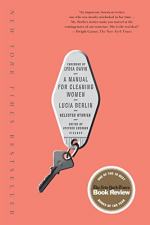|
This section contains 520 words (approx. 2 pages at 400 words per page) |

|
A Manual For Cleaning Women Summary & Study Guide Description
A Manual For Cleaning Women Summary & Study Guide includes comprehensive information and analysis to help you understand the book. This study guide contains the following sections:
This detailed literature summary also contains Quotes and a Free Quiz on A Manual For Cleaning Women by Lucia Berlin.
This study guide refers to A Manual for Cleaning Women, by Lucia Berlin: Picador Paperback. 2016 Edition.
A Manual for Cleaning Woman is a collection of short fiction by Lucia Berlin. The stories cover a range of issues facing the characters. A middle-aged woman reflects on her addiction and loneliness in the opening story.
The collection then takes the reader into the past as a young girl helps her grandfather pull out his teeth to prepare for a set of false teeth. Other stories about the girl find her attending a Catholic school as the only Protestant student. She wants to fit in at the school, but her religion and family prevent her from doing this.
Other stories explore how a woman’s sexuality evolves. Stories address girls first learning how to flirt to having sex for the first time after sobriety. The author examines sexuality in light of power and poverty and sex after suffering a loss.
As a grown woman, the narrator works as a nurse and a cleaning woman. While working as a cleaning woman, she begins stealing sleeping pills with the intent of committing suicide. However, she changes her mind. Her time working in a hospital gives her insight into the troubles of alcoholics and people who are suicidal.
Slowly, the reader begins to understand the narrator’s own struggles with addiction. For example, it is difficult having to face her children after sneaking out of the house for a drink one night. She remembers having to deal with police. Though some of those dealings turned out okay, they were all unfortunate. Then, she experiences detox at a rehab center. The consequences of addiction touch the individual as well as others.
The woman also must deal with her sister Sally’s terminal illness. Through a series of short stories, the reader learns about the relationship between the two women. Their mother’s own mental illness had affected their relationships with each other and the men in their lives. Each sister remembers and mourns the mother differently, which offers insight into how the women view death. The women are able to connect through Sally’s treatment, but the narrator Lou knows that her sister is on borrowed time.
The stories give the narrator a chance to reflect on her own life and loves. She explores the darker side of drug addiction, unwanted pregnancy, and child abuse. She tries to help others to understand the issues they face in their time of need.
The author creates a world in which the consequences of addiction are on full display. The stories reflect a distance within her own family and how she connects with her own children. She is honest about how drugs destroyed relationships, such as her love affair with Max, the father of two of her children.
The collection contains semi-autobiographical stories, but the reader does not know the details of the author's personal experience. The stories give raw insight into themes such as family, death, addiction, sexuality, and loneliness. The stories are sometimes bleak, but the author does offer hope and insight into survival.
Read more from the Study Guide
|
This section contains 520 words (approx. 2 pages at 400 words per page) |

|



